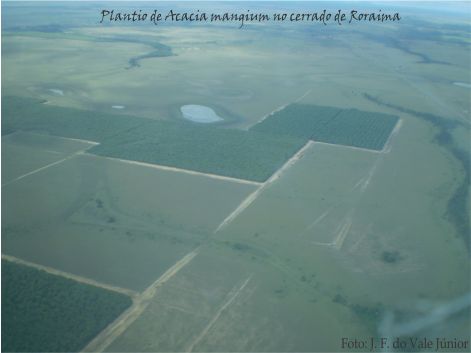Resistência de genótipos de feijão-caupi ao Callosobruchus maculatus (Fabr.) (Coleoptera: Bruchidae)
DOI:
https://doi.org/10.18227/1982-8470ragro.v5i1.428Palavras-chave:
Insecta. Macassar. Antixenose. Antibiose. Roraima.Resumo
Objetivou-se com esse trabalho avaliar a resistência de nove genótipos de feijão-caupi, a Callosobruchus maculatus. O experimento foi conduzido no Laboratório de Entomologia em condições ambiente (T = 28 ± 5 ºC e UR = 63 ± 10%) , do Departamento de Fitotecnia - CCA/UFRR, durante os meses de março a agosto de 2008. Os genótipos foram procedentes do Banco de Germoplasma da Embrapa-RR: BRS Amapá, BRS Novaera, BRS17-Gurguéia, BRS Mazagão, BRS Milênio, BRS Paraguaçú, BRS Patativa, BRS Guariba e BRS Marataoã. Utilizaram-se quatro repetições de 100 g de sementes de cada genótipo que foram infestados por 20 insetos adultos coletados ao acaso da criação em laboratório, por sete dias. Após o período de confinamento retirou-se os insetos e sub-amostrou-se 10 g de sementes da 100 g infestadas inicialmente. As variáveis avaliadas foram: o número de ovos viáveis, inviáveis, duração da fase imatura (dias), número insetos emergidos, percentagem de inseto emergido (%), massa seca consumida e a massa seca consumidas/insetos. Conclui-se que: BRS Patativa foi o menos preferido para oviposição por C. maculatus, apresentando, portanto, resistência do tipo não-preferência para oviposição a referida espécie; BRS Patativa e BRS Paragaçú são portadores de resistência do tipo antibiose. Ademais, nenhum dos genótipos testados neste experimento apresentou resistência do tipo não-preferência para alimentação de C. maculatus.Downloads
Publicado
Edição
Seção
Licença
Declaro em meu nome e em nome dos demais autores que aqui represento no ato da submissão deste artigo, à REVISTA AGRO@MBIENTE ON-LINE que: • 1. O conteúdo do artigo é resultado de dados originais e não publicados ou submetidos a outros periódicos. • 2. Além do autor principal, todos os co-autores participaram suficientemente do trabalho para tornar públicas as respectivas responsabilidades pelo conteúdo. • 3. Em caso de aceitação do artigo, os autores concordam que os direitos autorais a ele referentes se tornarão propriedade exclusiva da Revista Agro@mbiente On-line, vedada qualquer reprodução, total ou parcial, em qualquer outra parte ou meio de divulgação, impressa ou eletrônica, sem que a prévia e necessária autorização seja solicitada e que, se obtida, devem constar os agradecimentos à Revista Agro@mbiente On-line do Centro de Ciências Agrárias/UFRR.



